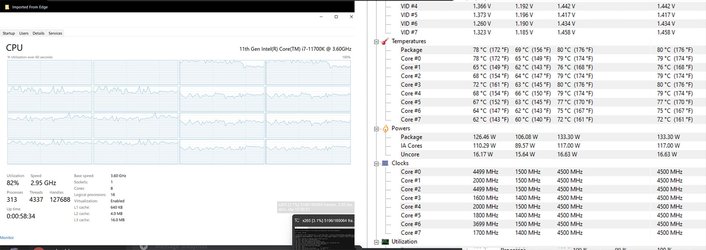meimeiriver
Member
- Local time
- 4:42 PM
- Posts
- 74
- OS
- Windows 11
I do a lot of video processing, using x265. Recently upgraded to Windows 11, and decided to do a render job again. To my dismay, I noticed the CPU saturation is not optimal. Core 0 and 1 are at 100% (as they should be); the rest, however, lingers around 80%. This is no good. And I've always had full CPU saturation on Windows 10.
I don't have an Alderlake (with known scheduler issues), just a regular i7 11700K. Anyone else seen this? I didn't buy an octa core, only to lose 20% in Windows 11, afterwards.
And is there any way to 'repair' it?
Thanks.
I don't have an Alderlake (with known scheduler issues), just a regular i7 11700K. Anyone else seen this? I didn't buy an octa core, only to lose 20% in Windows 11, afterwards.
And is there any way to 'repair' it?
Thanks.
My Computer
System One
-
- OS
- Windows 11
- Computer type
- PC/Desktop
- CPU
- i9 12900K
- Motherboard
- ASUS ROG STRIX Z690-A GAMING WIFI D4
- Memory
- G.Skill Trident Z Royal Elite 2x32GB 4266Mhz Gold
- Graphics Card(s)
- RTX 3080 Ti
- Sound Card
- Sound Blaster ZxR
- Monitor(s) Displays
- Alienware 38"
- Screen Resolution
- 3840x1600
- Hard Drives
- Samsung 980/860 EVO/970 Pro
- PSU
- Dark Power 12 850W
- Case
- Phanteks Evolv X
- Cooling
- MSI Meg CoreLiquid S360
- Keyboard
- Roccat Vulcan 122 AIMO






